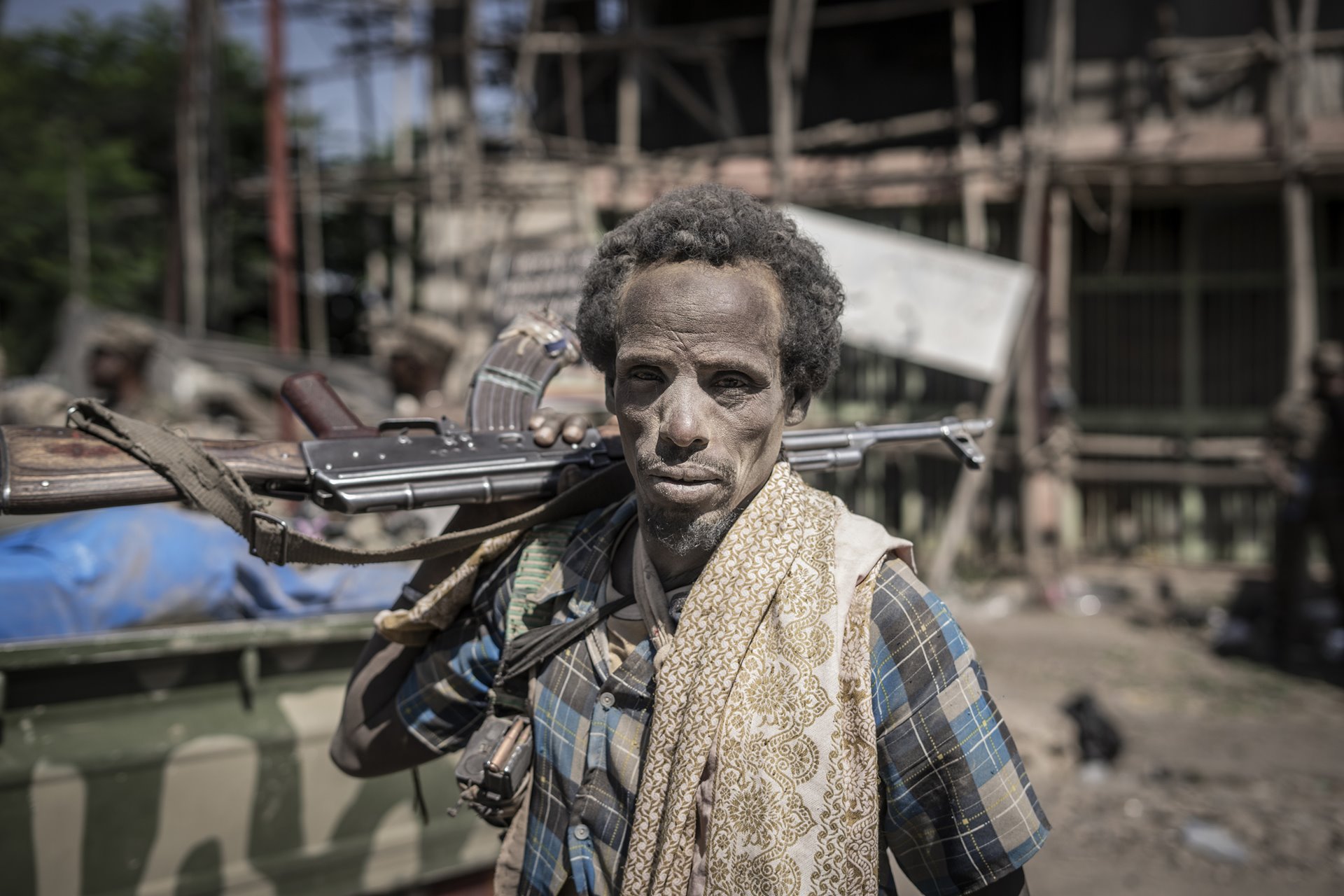A member of an Afar militia group poses for a photograph in Shewa Robit, Amhara, Ethiopia. Pro-Tigray forces took Shewa Robit on 21 November 2021, and it was re-taken by government forces on 1 December. Afar militia groups had been collaborating closely with the Ethiopian military in fighting pro-Tigray forces.
This project documents the violent internal conflict that has gripped Ethiopia since November 2020, and considers the impact it has had on people’s lives. Fighting involving government forces and the Tigray People’s Liberation Front (TPLF) spread from Tigray, Ethiopia’s northernmost region, south to neighboring states Amhara and Afar. The conflict, which each side accuses the other of beginning, has led to thousands of deaths, internal displacement and famine. Ethnic tensions, in particular between Ethiopia’s Tigray, Amhara and Oromo groups, underlie the discord.
The TPLF dominated Ethiopia’s ruling coalition from 1991-2018, until a new coalition put Abiy Ahmed in power as prime minister. On 4 November 2020, Abiy ordered a military response to an alleged attack on federal army camps in Tigray. Some say this was a false flag attack instigated by Ethiopian forces; others that it was a genuine pre-emptive strike in response to Ethiopian military buildup in the region. A communications blackout imposed by the government has made reporting on events and verification of conflicting claims extremely difficult. Fierce fighting continued in the following months, and in July 2021 the TPLF advanced into neighboring Amhara and Afar. Ethiopian forces launched a land offensive in the states, and later resumed air attacks on Tigray. Fighting took a heavy toll on civilians, telecommunications services were disrupted, and in Amhara and Afar electricity and running water were cut off.
Both in 2020 and 2021, the conflict was at its peak during harvest period, which contributed to famine in the region, as agriculture is the main source of livelihood in Tigray, Afar, and Amhar. According to the UN, 400,000 people were experiencing famine-like conditions in late 2021, with the vast majority of Tigray’s six million inhabitants in need of emergency aid. By September 2021, there were 2.1 million internally displaced people in Tigray, 250,000 in Amhara, and 112,000 in Afar, according to UN data. By early 2022, although conflict had subsided it had not stopped and there had been no decisive peace talks.

